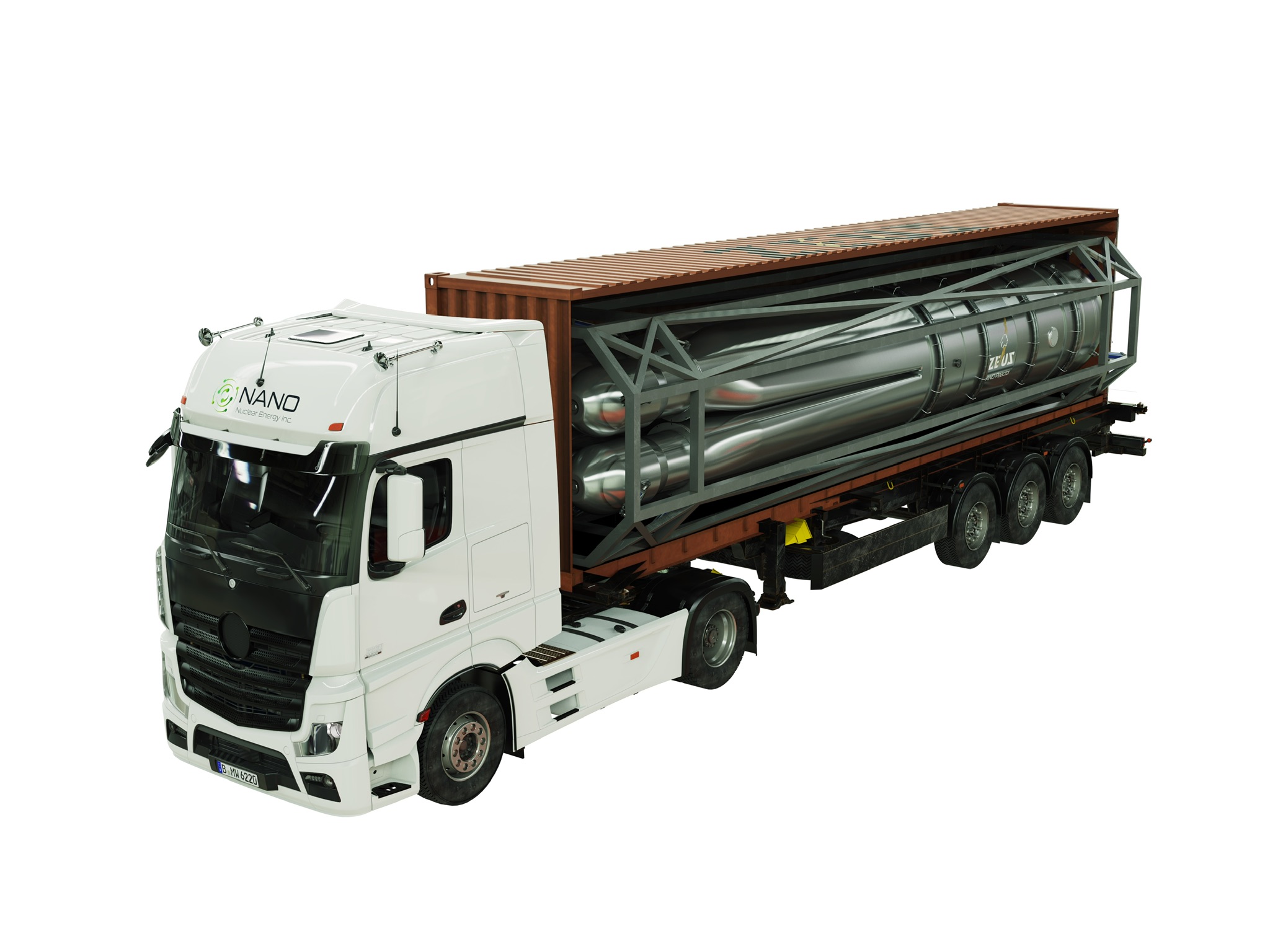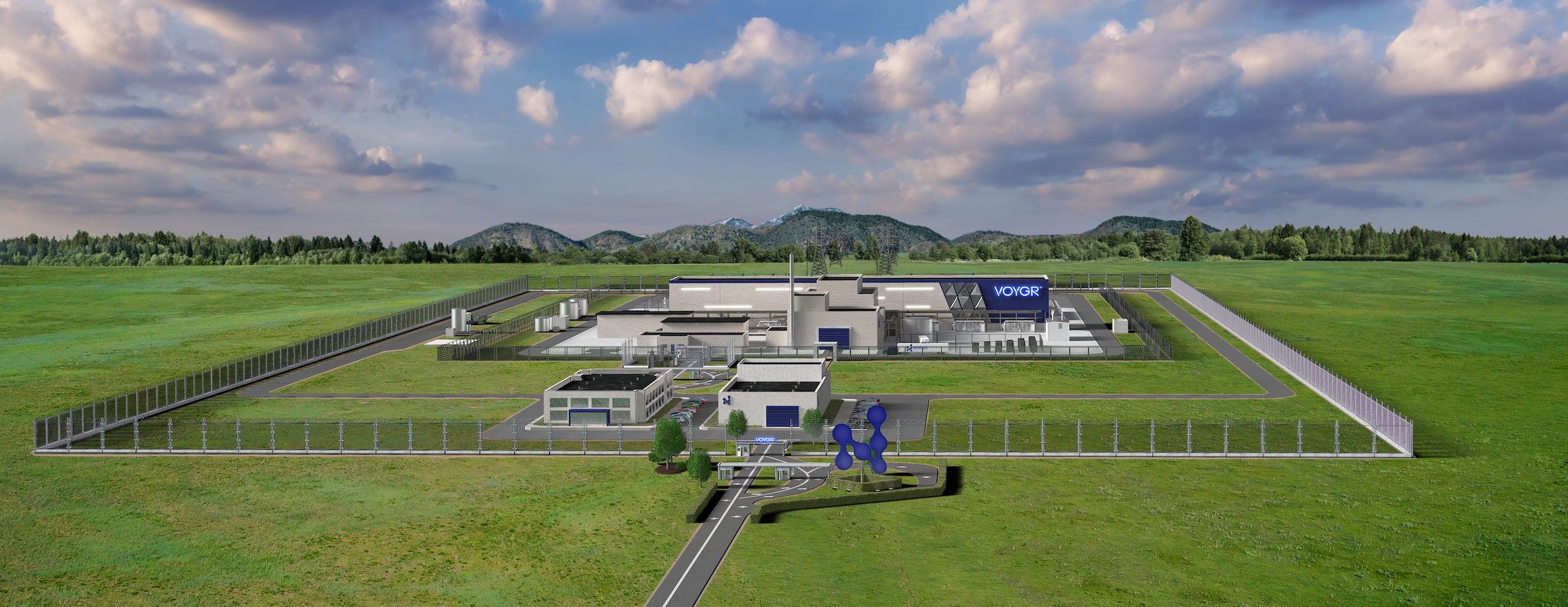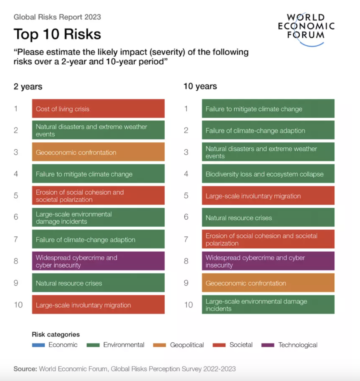Although small modular nuclear reactors are still in their infancy, companies are looking to apply the technology to a widening variety of industrial uses, including electrifying mining sites, processing heat and powering desalination.
Some companies are even exploring ways small reactors can power ships, while others see them as a potential energy supply for small communities, especially those in remote locations.
A quick thumbnail of what we’re talking about: Small modular reactors (SMRs) are fission-based systems that produce about one-third of the power generated by traditional nuclear plants — up to 300 megawatts of electricity, enough to power about 150,000 homes annually. They are also a fraction of the size, taking up about two soccer fields.
The global SMR market was valued at $9.5 billion in 2021 and is expected to reach $13 billion this year, according to Polaris Market Research.
We are still five to 10 years from seeing small reactors installed around the world, however, hundreds of companies, ranging in size from 12 to 12,000 employees, are developing prototypes.
“Some of the designs are coming from fairly small groups,” said Jonathan Cobb, senior communications manager at World Nuclear Association, which represents the global industry. “They will need to partner with the right businesses, academic institutions, etc., but this is a space for entrepreneurial minds.”
Others aren’t as optimistic. “I think the current hype about SMRs is mostly a bunch of hot air,” said Edwin Lyman, director of nuclear power safety at Union of Concerned Scientists, a nonprofit representing scientists, analysts and policy experts. “Most of these startups greatly underestimate the resources and time necessary to develop new nuclear technologies.”
Making the case
The industry figured out how to scale down nuclear plants about 50 years ago. But the cost was too high compared to gas, so production languished.
Jacopo Buongiorno, a professor in the Department of Nuclear Science and Engineering at the Massachusetts Institute of Technology, said SMRs offer three primary benefits:
- Their simplicity makes them cheaper.
- The lower power output means they’re more versatile — we don’t always need 1,000 megawatts.
- Finally, it will be relatively simple to slot in SMRs to infrastructure built for coal plants.
“You can even hire the existing staff to work for nuclear,” he said. “There are good synergies here.”
What’s more, fossil fuel power plants can be retrofitted to host SMRs. A fact sheet published by the U.S. Embassy in Romania, where one company plans to install six SMRs to power a mining site, suggests the cooling water delivery systems, demineralized water, potable water, site fire protection, and administrative, training and warehouse buildings could all be reused.
They will need to partner with the right businesses, academic institutions, etc., but this is a space for entrepreneurial minds.
SMRs are especially useful for off-grid applications, according to researchers and industry professionals. Some companies hope to use them to replace diesel-fueled vehicles at mining sites with hydrogen gas.
Hydrogen is more sustainable than diesel but requires another form of energy to generate. A small, mobile nuclear reactor would do the trick, said David Dabney, CEO of StarCore Nuclear, a Canadian company with just 12 employees.
A study from Imperial College London supports Dabney’s claim that the electricity and excess heat that comes from SMRs can be used to produce hydrogen. “We’re essentially talking about reactors that are competing with diesel generators,” added James Walker, chief executive at Nano Nuclear Energy, a U.S.-based company with about 30 employees.
Nano Nuclear develops micro modular reactors (MMRs), which are even smaller than SMRs. MMRs qualify as any reactors that produce up to 10 megawatts per hour. They are small enough to fit inside a large delivery truck — designed to be compact for easy transportation and deployment. As a result, they could have even more applications for corporations.
“You could potentially nuclearize the entire shipping industry,” Walker said. “And in doing so, make fuel cheaper, the ship safer and save the industry an enormous amount of money.”

![]()
![]()
![]()
![]()
![]()
![]()
![]()
![]()
The market landscape
Large companies including Rolls Royce, Westinghouse and BWXT are leading the way with SMRs, according to Buongiorno. They have the resources to build the technology and the funding to pay for the long and expensive licensing process. However, several SMR-specific companies have risen to prominence in the last 10 years, including NuScale Power and TerraPower, the latter of which is backed by Bill Gates.
The emerging technologies are extremely diverse. There are about 50 SMR designs globally. Pressurized water reactors (PWRs) and molten salt reactors are two commonly used approaches. PWRs use high pressure water to transfer heat from the reactor core to create steam, which subsequently drives a turbine that generates electricity. They have a high thermal output, which can be used to provide district heating. Molten salt reactors use a liquid mixture of molten salt as both fuel and coolant. These reactors have an internal safety mechanism, according to expert research. The fuel expands when it overheats. This expansion pushes fuel out of the active core area, and automatically limits the reactor’s output and prevents nuclear meltdown.
I expect only a very small number of new reactors — those that receive substantial and sustained government subsidies — to be built within the next decade.
“Over the last 10 years, the ecosystem of advanced small modular reactors has certainly become a lot more diverse,” said Rob Loveday, communications officer for Moltex Energy, a company based in the U.K. and Canada with around 30 employees. “And that’s a great thing. It’s great to have this huge diversity.”
Between disasters at large-scale power plants such as Chernobyl and Fukushima, as well as its rise to fame as the world’s scariest weapon, nuclear power has long been seen as a threat rather than a solution.
So while the industry is excited about diversity, Lyman worries it could create safety concerns. “It’s not possible to make a general conclusion that all SMRs are more or less safe than current reactors given the large number of different designs,” he said.
NuScale stands out among the SMR-specific companies for its progress. The company was founded in 2007 and employs around 560 people. It plans to have reactors in the U.S., Korea, Poland and Romania by 2029.
Other players don’t necessarily have the resources to build products and obtain licensing on that timeline. But they have prototypes, and some are in talks with governments about implementation.
StarCore Nuclear is developing a high-temperature 35-megawatt gas reactor primarily to serve off-grid uses, such as mining sites and remote communities.
“In terms of climate change, we feel we can have a greater effect by going off grid,” Dabney said. The company is in conversations with a Canadian province about a 40-year power purchase agreement, which would essentially make StarCore the primary energy provider for a region of 8,000 people.
Moltex Energy is developing a waste burner reactor and a molten salt reactor with investor and private funding. “We are confident we can bring it to reality by the end of the decade,” Loveday said, adding that the company is also keeping its eyes on potential government funding.
Indeed, the U.S. and U.K. governments both show willingness to fund SMR projects. In May, the U.S. announced it intends to provide at least $275 million to help advance NuScale’s SMR project in Romania. In late 2023, the U.K. is conducting an SMR competition that will select two technologies for further development.

![]()
![]()
![]()
![]()
![]()
![]()
Barriers to a boom
SMR companies — particularly smaller ones — have plenty of hurdles to overcome. The main barriers include funding, public perception about safety concerns, and the time and resources for licensing and regulatory processes.
“The jury is still out for SMRs,” Buongiorno said. “They aren’t actually built yet.” He added that some startups might be over-ambitious. “Startups have ambitions to be tech developers and employers, and that’s where I’m a little bit skeptical. This requires the construction of plants. This isn’t a mom-and-pop operation.”
Lyman said government subsidies will play a large role in which technologies succeed and which do not. “Despite all the hype, there are only a small number of viable projects today,” Lyman said. “I expect only a very small number of new reactors — those that receive substantial and sustained government subsidies — to be built within the next decade.”
There’s a happy realization within the industry that everyone’s in it together because the pie is big enough for everyone in terms of that potential and need for decarbonization.
Even if smaller companies manage to secure the resources they need to build the technology, the licensing process is costly. Clayton Scott, executive vice president of business development at NuScale, said it cost $500 million to certify the company with the U.S.
Part of the problem is that the U.S. regulatory process still caters to traditional large scale nuclear plants, according to Cobb. “It’s the same bureaucratic burden but for a reactor that is considerably smaller,” he said.
Although nuclear power doesn’t produce greenhouse gas emissions during operation, there are also concerns about how next-generation reactors will affect the environment. Nuclear reactors require fuel from uranium mining to generate electricity, which has widespread negative environmental and health effects, including contamination of water with radioactive dust and water-borne toxins.
Nuclear energy also creates radioactive waste. One study published in Proceedings of the National Academy of Sciences said SMRs will increase the volume of nuclear waste generated. Nuclear waste primarily refers to leftover uranium fuel, but it can also include items such as laboratory tools exposed to radiation. That material remains toxic for tens of thousands of years and is extremely harmful to human health and the environment.
Despite these concerns, the industry is marching on. The biggest hurdle for now is licensing, but the urgent need for more low-carbon energy may be enough to get industry and government working together, according to insiders.
“There’s a happy realization within the industry that everyone’s in it together because the pie is big enough for everyone in terms of that potential and need for decarbonization,” Loveday said. “We need close cooperation with regulators. We need regulators to have enough bandwidth.”
- SEO Powered Content & PR Distribution. Get Amplified Today.
- PlatoData.Network Vertical Generative Ai. Empower Yourself. Access Here.
- PlatoAiStream. Web3 Intelligence. Knowledge Amplified. Access Here.
- PlatoESG. Automotive / EVs, Carbon, CleanTech, Energy, Environment, Solar, Waste Management. Access Here.
- BlockOffsets. Modernizing Environmental Offset Ownership. Access Here.
- Source: https://www.greenbiz.com/article/interest-small-nuclear-power-rising-heres-why
- :has
- :is
- :not
- :where
- $UP
- 000
- 1
- 10
- 12
- 15%
- 2023
- 30
- 300
- 50
- 50 Years
- 8
- 9
- a
- About
- AC
- academic
- Academy
- According
- active
- actually
- added
- adding
- administrative
- advanced
- affect
- ago
- Agreement
- AIR
- All
- also
- always
- ambitions
- among
- amount
- an
- analysis
- Analysts
- and
- announced
- Another
- any
- applications
- Apply
- approaches
- ARE
- AREA
- around
- article
- AS
- Association
- At
- automatically
- backed
- Bandwidth
- based
- BE
- because
- become
- been
- benefits
- Big
- Biggest
- Bill
- Bill Gates
- Billion
- Bit
- both
- bring
- build
- buildings
- built
- Bunch
- burden
- bureaucratic
- business
- business development
- businesses
- but
- by
- CAN
- Canada
- Canadian
- caters
- Center
- ceo
- certainly
- certify
- change
- cheaper
- chief
- Chief Executive
- claim
- click
- Climate
- Climate change
- Close
- Coal
- College
- comes
- coming
- commonly
- Communications
- Communities
- Companies
- company
- compared
- competing
- competition
- concerned
- Concerns
- conclusion
- conducting
- confident
- considerably
- construction
- conversations
- cooperation
- Core
- Corporations
- Cost
- costly
- could
- create
- creates
- Current
- data
- David
- decade
- decarbonization
- delivery
- Department
- deployment
- designed
- designs
- Despite
- develop
- developers
- developing
- Development
- develops
- diesel
- different
- Director
- disasters
- district
- diverse
- Diversity
- do
- Doesn’t
- doing
- Dont
- down
- drives
- during
- Dust
- easy
- ecosystem
- Edwin
- effect
- electricity
- electrifying
- emerging
- emerging technologies
- Emissions
- employees
- employers
- employs
- end
- energy
- Engineering
- enormous
- enough
- Entire
- entrepreneurial
- Environment
- environmental
- especially
- essentially
- etc
- Ether (ETH)
- Europa
- Even
- everyone
- everyone’s
- excess
- excited
- executive
- existing
- expands
- expansion
- expect
- expected
- expensive
- experts
- Exploring
- exposed
- extremely
- Eyes
- fact
- fairly
- FAME
- feel
- Fields
- figured
- Fire
- fit
- five
- For
- form
- fossil
- Fossil fuel
- Founded
- fraction
- from
- Fuel
- Fukushima
- fund
- funding
- further
- further development
- GAS
- Gates
- General
- generate
- generated
- generates
- generators
- get
- given
- Global
- Globally
- going
- good
- Government
- Governments
- great
- greater
- greatly
- greenhouse gas
- Greenhouse gas emissions
- Grid
- Group’s
- happy
- Have
- he
- Health
- help
- here
- High
- hire
- Homes
- hope
- host
- HOT
- hour
- How
- How To
- However
- HTML
- HTTPS
- huge
- human
- Hundreds
- Hurdles
- hydrogen
- Hype
- i
- if
- Imperial
- Imperial College
- implementation
- in
- include
- Including
- industrial
- industry
- Infrastructure
- inside
- install
- installed
- Institute
- institutions
- intends
- interest
- interested
- internal
- investor
- IT
- items
- ITS
- james
- just
- keeping
- korea
- laboratory
- large
- large-scale
- Last
- Late
- leading
- learning
- least
- Leftover
- less
- Licensing
- limits
- Liquid
- little
- locations
- Long
- looking
- Lot
- low-carbon
- lower
- Main
- make
- MAKES
- manage
- manager
- Market
- market research
- marketplace
- massachusetts
- Massachusetts Institute of technology
- material
- May..
- means
- mechanism
- micro
- might
- million
- minds
- Mining
- mixture
- Mobile
- modular
- molten salt
- money
- more
- most
- mostly
- move
- nano
- National
- necessarily
- necessary
- Need
- negative
- New
- news
- Newsletter
- next
- next-generation
- NIH
- node
- Nonprofit
- now
- nuclear
- Nuclear power
- number
- obtain
- of
- off
- offer
- Officer
- on
- ONE
- One-third
- ones
- only
- operation
- Optimistic
- or
- Others
- our
- out
- output
- over
- Overcome
- particularly
- partner
- Pay
- People
- per
- perception
- plans
- plants
- plato
- Plato Data Intelligence
- PlatoData
- Play
- players
- Plenty
- Poland
- policy
- possible
- potential
- potentially
- power
- power plants
- presentation
- president
- pressure
- primarily
- primary
- private
- Problem
- Proceedings
- process
- processes
- processing
- produce
- Production
- Products
- professionals
- Professor
- Progress
- project
- projects
- prominence
- protection
- prototypes
- provide
- provider
- public
- published
- purchase
- Purchase Agreement
- pushes
- qualify
- Quick
- Radiation
- ranging
- rather
- reach
- Reality
- realization
- receive
- refers
- region
- Regulators
- regulatory
- relatively
- remains
- remote
- representing
- represents
- require
- requires
- research
- Resources
- result
- right
- Rise
- Risen
- rising
- rob
- Role
- rolls
- Romania
- s
- safe
- safer
- Safety
- Said
- salt
- same
- Save
- Scale
- Science
- SCIENCES
- scientists
- scott
- secure
- see
- seeing
- senior
- serve
- several
- sheet
- Shipping
- show
- Simple
- simplicity
- site
- Sites
- SIX
- Size
- skeptical
- slot
- small
- smaller
- So
- Soccer
- solution
- some
- Space
- Staff
- stands
- Startups
- State
- Steam
- Still
- Study
- Subsequently
- substantial
- succeed
- such
- supply
- Supports
- sustainable
- sustained
- Systems
- taking
- talking
- Talks
- tech
- Technologies
- Technology
- tens
- terms
- than
- that
- The
- the world
- their
- Them
- There.
- thermal
- These
- they
- thing
- Think
- this
- this year
- those
- thousands
- threat
- three
- thumbnail
- time
- timeline
- to
- today
- together
- too
- tools
- traditional
- Training
- transfer
- transportation
- Trends
- truck
- turbine
- two
- U.K.
- u.s.
- union
- urgent
- use
- used
- uses
- variety
- Vehicles
- versatile
- very
- viable
- vice
- Vice President
- volume
- walker
- Warehouse
- was
- Waste
- Water
- Way..
- ways
- we
- weekly
- WELL
- What
- when
- which
- while
- why
- will
- Willingness
- with
- within
- Work
- working
- world
- world’s
- would
- year
- years
- yet
- you
- zephyrnet










